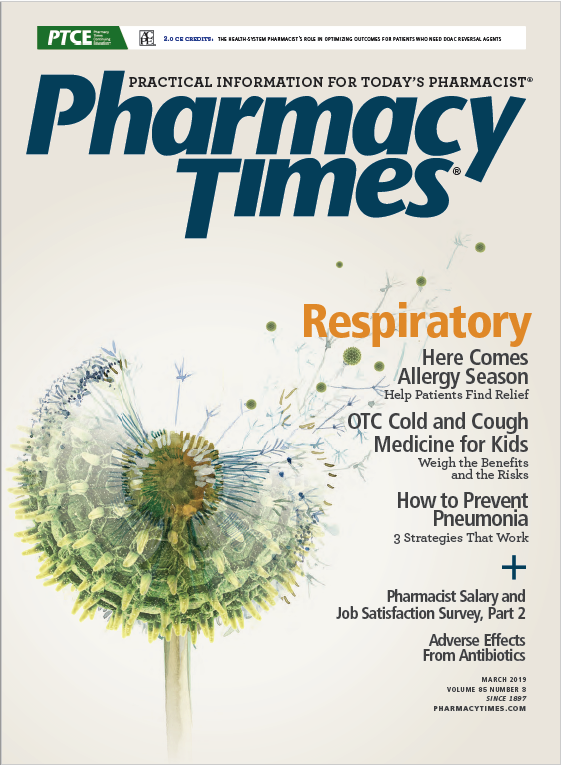Publication
Article
Pharmacy Times
What is the Pediatric Cancer STAR Act?
The childhood cancer survivorship, treatment, access, and research (STAR) legislation means pharmacists must be up-to-date on the latest chemotherapy regimens.
The childhood cancer survivorship, treatment, access, and research (star) act is the most extensive pediatric cancer bill ever signed into law.
The bill was passed by the Senate on March 22, 2018, followed by the House of Representatives on May 22, 2018, and then signed into law by President Donald J. Trump on June 5, 2018. Since the bill was introduced in Congress, in 2015, it has gained a tremendous amount of support. Individuals have begun to recognize the alarming funding gaps that exist for the resources needed to make any advancements in care for pediatric patients with cancer. Therefore, the act largely focuses on expanding opportunities for childhood cancer research, improving efforts to identify and track childhood cancers, and enhancing the quality of life of survivors.1 Specifically, more funds have been allocated for the collection of biospecimen and demographic information, the creation of programs to evaluate and provide adequate treatment for survivors, and grants to state childhood cancer registries.2 The act states that $30 million will be provided each fiscal year from 2019 to 2023 to support such activities.2 Under the act, the US Department of Health & Human Services will be responsible for the development, maintenance, and oversight of how the funds should be awarded.2 Furthermore, the act requires the inclusion of at least 1 pediatric oncologist on the National Cancer Advisory Board.2
Why is the Star Act Needed?
The National Cancer Institute (NCI) Surveillance, Epidemiology and End Results study in 2014 found that about 1 in 285 children in the United States will recieve a cancer diagnosis before their 20th birthday.3 Furthermore, an estimated 175,000 cancer cases are diagnosed annually in children younger than 15 years around the world.1 Sadly, less than 40% of patients receive a diagnosis and are adequately treated, with most patients residing in high-income countries.3 Of those who are treated, about 90% will receive treatment under clinical trials through the NCI’s Pediatric Oncology Branch.3 The trials funded by the NCI have been very successful, with some cancer survival rates reaching 80%.4 Although such statistics are promising, of the 109 new oncology medications developed since 1990, just 2 were developed and approved by the FDA to treat childhood cancers.3 And patients who beat childhood cancer often have late effects. These can include impaired growth and neurologic development after radiation therapy and may have unintended effects on other parts of the body, according to the NCI.2 Results from research by St. Jude Children’s Research Hospital show that more than 95% of survivors of childhood cancer experience late effects.2
What does the Future Hold?
The passing of the STAR Act is a big victory for both advocates and families who have been adamant about the lack of treatment as a result of inadequate funding
and research. Up until the passage of this bill, just 4% of federal funding had been allocated for childhood cancer.5 Although that increase has been approved in principle, it has yet to be appropriated. Ensuring that the key institutions and programs receive all funding will be essential in the years to come. Likewise, it is imperative to recognize that the care for pediatric patients with cancer does not stop here. With drug companies reluctant to develop new chemotherapy drugs, unique treatment options for each childhood cancer have remained limited. Unfortunately, many drug companies view individualized chemotherapy as largely unprofitable. Thus, providing pharmaceutical firms with hard data and statistics is of the utmost importance in persuading them to take a different view.
What Does this Mean for Pharmacists?
With more research being conducted on childhood cancers, the hope is that new and improved chemotherapy regimens will appear. Pharmacists must ensure that they are up-to-date on the latest drugs. Helping other providers understand these regimens is crucial to keeping patients safe. As the research supported by the STAR Act gains momentum, oncology pharmacists should be attentive to new publications and the discoveries they detail.
Lindsay R. Kohler is a PharmD candidate at the University of Kentucky College of Pharmacy in Lexington.Joseph L. Fink III, BSPharm, JD, DSc (Hon), FAPhA, is a professor of pharmacy law and policy and the Kentucky Pharmacists Association Endowed Professor of Leadership at the University of Kentucky College of Pharmacy.
References
- Byrne B. STAR Act, others aid in fight against cancer. The Andalusia Star News. May 12, 2018. andalusiastarnews.com/2018/05/12/star-act-others-aid-in-fight-against-cancer/. Accessed January 31, 2019.
- Brummel SE. Childhood cancer STAR Act of 2018 (public law 115-180). Duke SciPol. scipol.duke.edu/content/childhood-cancer-star-act-hr-820-s-292-115th-congress. Accessed January 31, 2019.
- Cancer in children & adolescents. Cancer Facts & Figures 2014. acco.org/wp-content/uploads/2014/11/ACS-Special-Report-2014.pdf. Accessed January 31, 2019.
- National Institutes of Health. Surveillance, Epidemiology, and End Results Program. National Cancer Institute website. seer.cancer.gov. Accessed January 31, 2019.
- Childhood Cancer Foundation. Childhood cancer facts. I Care I Cure website. icareicure.org/get-informed/childhood-cancer-facts/. Accessed January 31, 2019.







